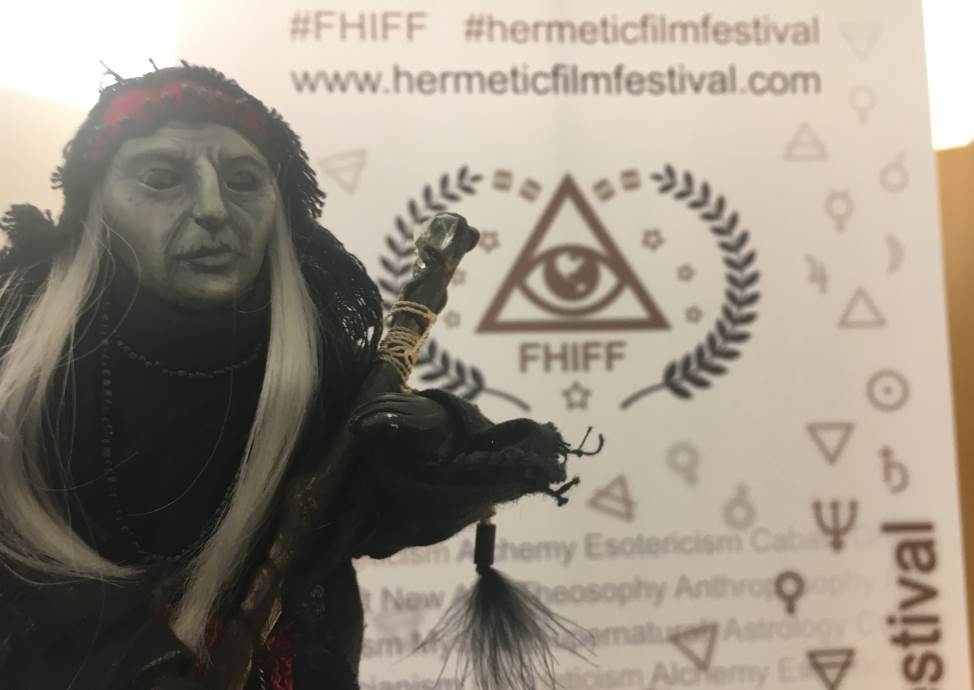
Witch Nettle among the guests at the Hermetic Film Festival 2018 in Venice
Last week, on the 1st and 2nd of March 2018 the First International Hermetic Film Festival, for short FHIFF 2018, took place in Italy. Overall, 28 films in 10 categories were among the finalists and were shown in 2 days at the »La Casa del Cinema«, in the very city center of Venice, competing for 17 Awards (and 3 bonus awards). Everything was organized for the very first time by the sole initiative of a German-Italian team, comprised by Sara Wundersaar Ferro and Chris Weil.
Over 200 guests came from all over the world, including Hollywood filmmakers, and at peak times, the cinema was overcrowded. Nettle, by the way, also was among the guests and captured by the photographers.
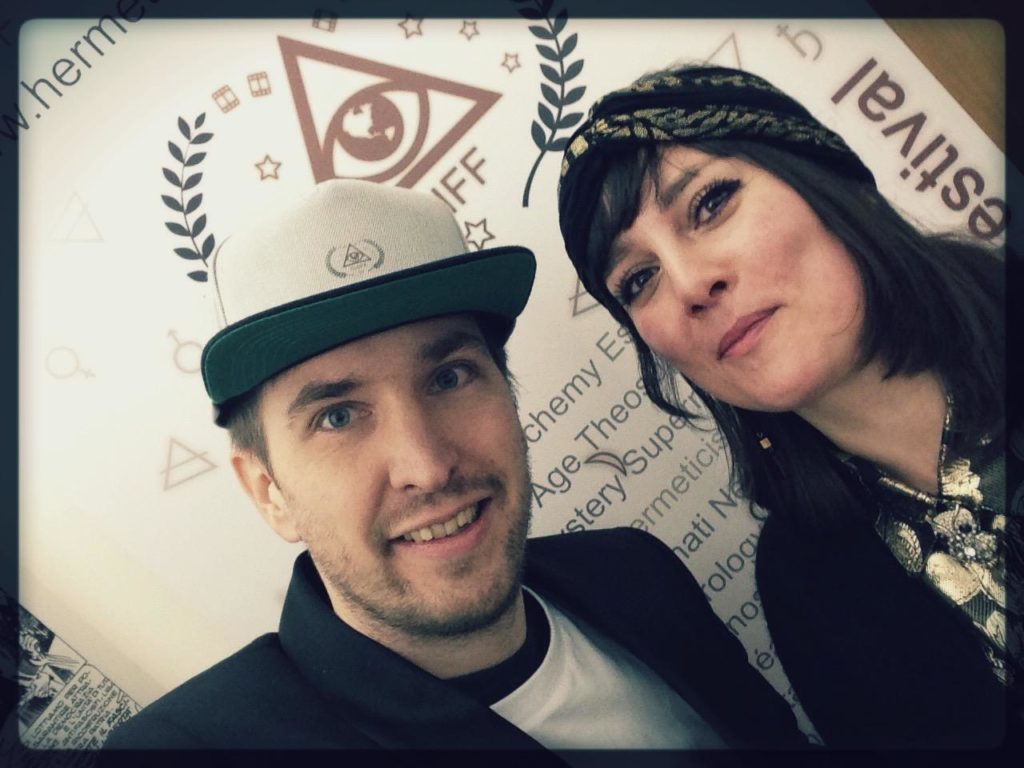
Festival Director Sara Wundersaar Ferro and Technical Director Chris Weil at the FHIFF 2018. The Italian and German duo worked before on several projects, including a documentary on the hermetic »Ritman-Library« in Amsterdam, which holds more than 23,000 manuscripts and books on Hermeticism, Alchemy, Rosicrucianism, Gnosis, and Esoterica. Thanks to a donation by bestselling author Dan Brown the library could start to digitalize a part of its collection and make the rare materials online available for research purposes.
In their manifesto of the First Hermetic International Film Festival Sara Wundersaar Ferro and Chris Weil define the event itself as »A truly unique film festival overtly dedicated to the domain of Hermetica« and furthermore:
»The arcane never stopped being a silent companion of modern and postmodern culture«
The occult sciences – notably Alchemy, Astrology, Natural Magic – have been the prelude of ensuing scientific discoveries, the very base of them in the antiquity and premodern world … The arcane, although it has always been sold and perceived as the flip side of the civilization process, never stopped being a silent companion of even modern and postmodern culture.
As NettlesGarden.com shares this precise observation, I took the chance to visit Venice as an official partner of the FHIFF 2018, following Sara’s invitation. In the following weeks I will discuss all of the films, some of them in detail, today we have a quick walk through my personal favorites on the two days.
Colorful, diverse, and different, with topical themes ranging from classic, over medieval to contemporary interpretations with some elements of science fiction is also the best way to describe the program of the FHIFF 2018, which was divided in 10 categories, with 28 films. Upfront, not all films seem for a practitioner or somebody deeply drawn to a specific part of »Western Esoteric Tradition« really related to »her« path.
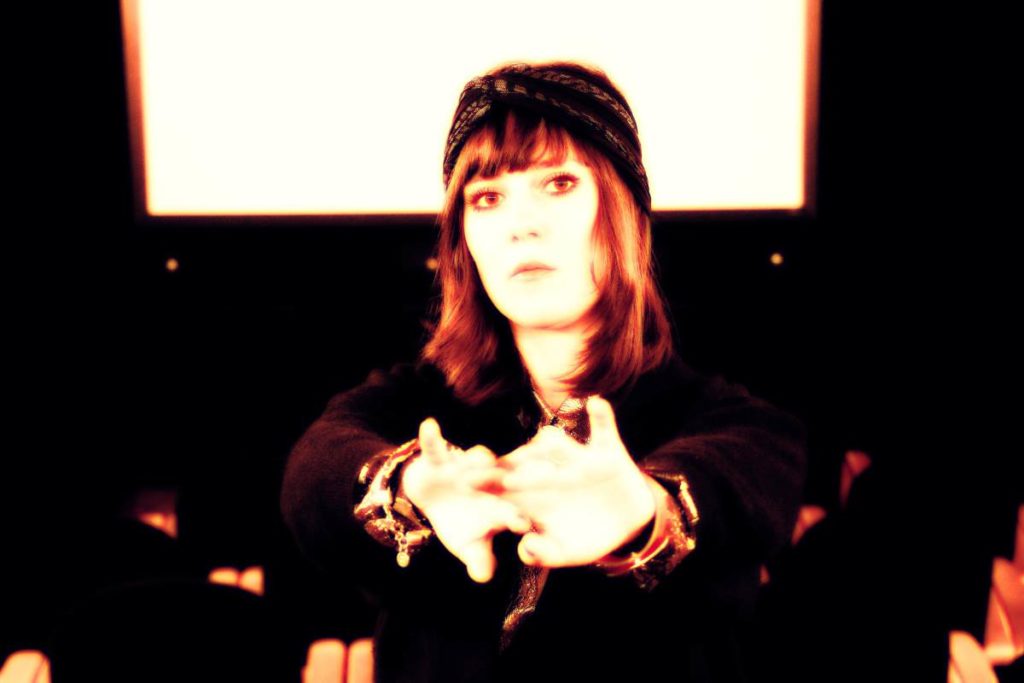
Festival Director Sara Ferro at the opening of the FHIFF 2018
And it cannot be any different, especially for such a specific sub-subject such as »Hermetics«, »Hermetism« or »Hermeticism« for which even the official denomination is subject to debate. Not just because in it’s over 3,000-year-old history so many different disciplines have been associated with it and even these disciplines underwent considerable change over the course of time. There is more to it.
Let’s take alchemy, for example, which was often tied to the blacksmith’s profession in the ancient past, gave birth in (relatively) modern times to spagyrik and then influenced much newer developments such as Homeopathy until it underwent a psychologization with C.G. Jung. Neo-pagans try to revive the Edda but also carry new, contemporary ideas into ancient forms. And every generation tries, to connect the old esoteric traditions and practices to the current body of scientific knowledge. At Ficino’s and Newton’s time this worked much smoother than in the 20th century, but attempts nevertheless existed (e.g. »ectoplasm« or the aforementioned psychologization of magick and alchemy).

First Hermetic International Film Festival 2018
This is why disciplines and currents labeled as »esoteric« seem at times extremely disconnected and different from each other. This is also true for some of the movies at the FHIFF. But for most outsiders they have one thing in common: they do not (anymore) belong to the commonly accepted part of mainstream science and religion. On the other hand, they for sure are all part of our European cultural heritage and history of thought and in »the quest for the meaning of life and its destiny« as written in the Festival’s manifesto. And this is why they then again fit wonderfully well together, in the 2 days of extraordinary movie time 🙂
My personal favorites have been »Left Hand Path« for an outstanding accurate portrait of Magister Templi in the Temple of Set, James Kirby. I do not deem this documentary accurate because I would have known Kirby, but because I never felt so well represented by a documentary piece, may this be written, visual or any other way. I loved CHRYSALIS for its symbolism and the exclusive images from the tombs of the Rosicrucian Museum. The Blacksmith from Ukraine for its romantic blend of music and countryside images, an absolute favorite, was feature film »Agadah«. But let’s go through them one by one, and next week I will follow with a complete list and description of all films shown at the festival.
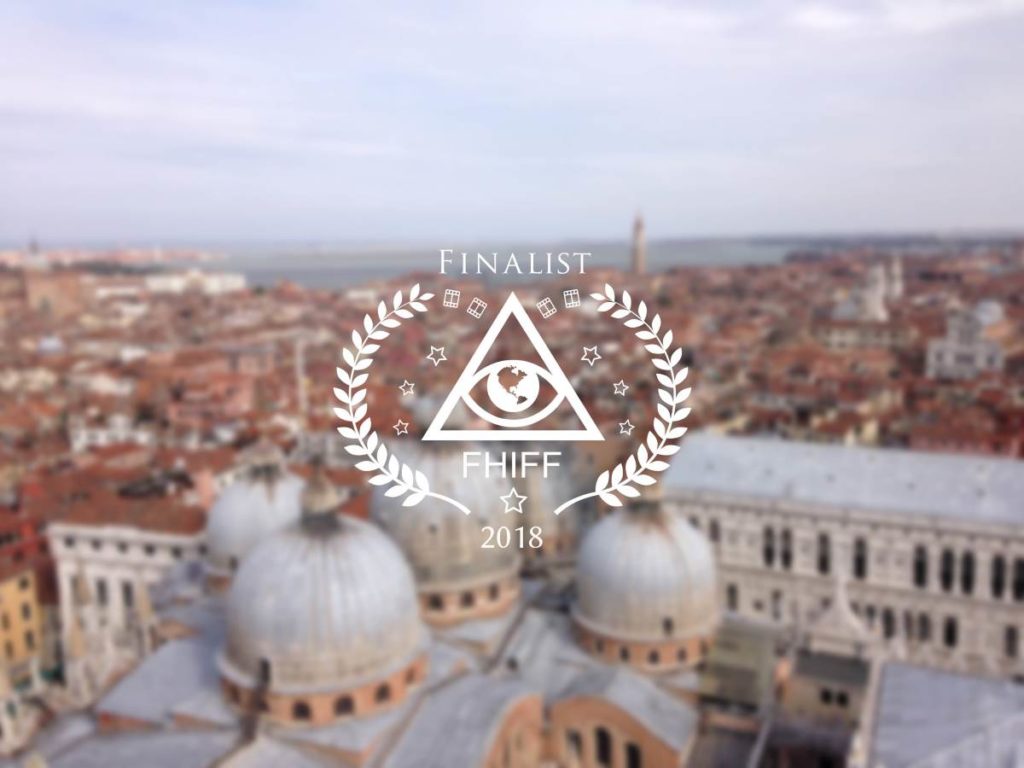
28 films made it into the list of finalists at the First Hermetic Film Festival 2018 in Venice
1 Thursday – 1st of March
The first day started with several strong films, and here are my personal four favorites of the first day, excluding number five »Metanoia, Metanoia«, which as a plot started as an Italian Horror or Fantasy movie, but incorporated quite well researched gnostic symbolism and authentic antiquities. The film »Metanoia, Matanoia« by Joshua Alexander Matteo will be discussed next week.
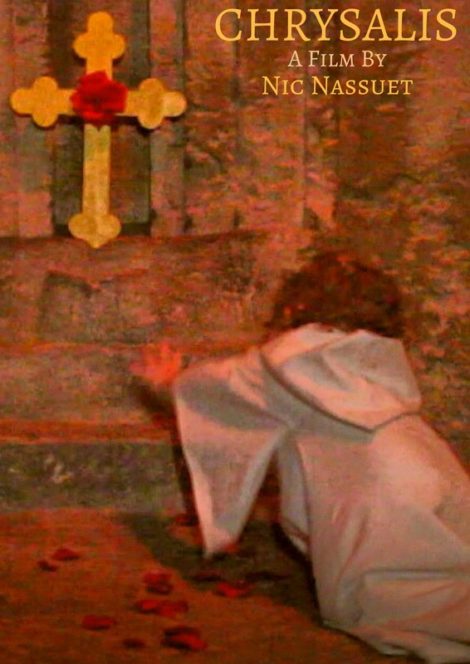
© CHRYSALIS – All rights reserved. Via FHIFF.
CHRYSALIS
This was the first movie, which made me feel a real hermetic vibe on the festival. Shown as European Premiere on the FHIFF, it was featured in the category »The secrets of Alchemy« and won the Vitrol Award for the best experimental film.
The short color movie of about 5 minutes shows the alchemical process of transformation of an army veteran getting back into civil life, embedded deeply in classical western hermetic symbolism best known from the Golden Dawn tradition (and it’s many successors) and hermetic freemasonry.
While the first part shows the soldier’s descending into the blackness, the second part shows the process of transformation and rebirth in a pretty universal matter: Following a woman in a robe making the sign of Harpocrates into the underworld accompanied by the IAO-Formula (Isis, Apophis, Osiris), the journey leads directly into the tombs. It was the first time the tombs of the Rosicrucian Egyptian Museum in San Jose, California have been filmed.
The sign of Osiris the slain and Osiris the risen are self-explanatory followed by an ascent into a new life, symbolized by a newborn child exiting the tomb crying and following the woman now holding the Rose-Cross. Through the Rose Cross the child is born alive again, finding itself in harmony in a green and vibrant garden.
Hollywood based artist Nic Nassuet, born Nick Ortiz-Trammell, turned out to be a great conversation partner on a lot of occult topics. He is nowadays mainly Neo-folk musician, after leaving his career behind as spy for the US army. Thus, we can suppose, the veteran in the film is Nic himself – as he also admitted for NettlesGarden.com.
Nic had been involved in film and television since early childhood and continued to be active in the acting community, through several boards, the best known may be the Emmy awards committee of the National Academy of Television Arts and Sciences. He appeared in several films as an actor, but also as a writer or in the music department. CHRYSALIS (with caps) is an experimental short film and his first production. He was so nice to hand me out a copy of his debut album, “Eleutherios”, which – positively – surprised me. I recommend the YouTube clips or iTunes to check.
Above and Below (2016)
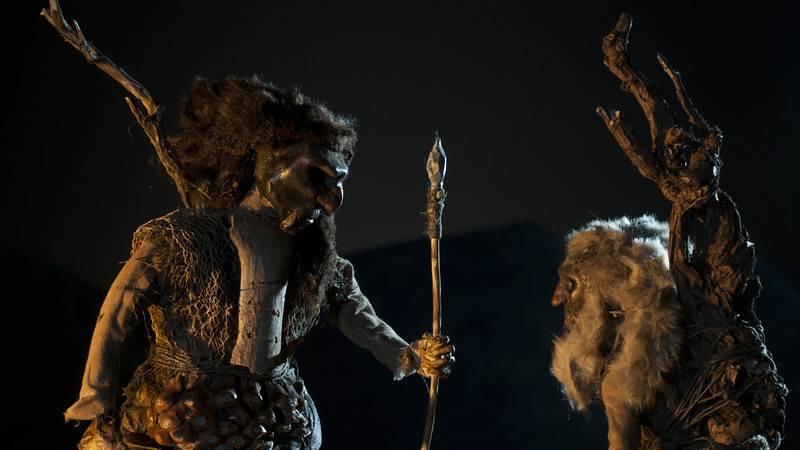
Prehistoric shaman in film scene from Israeli Animation film – Above and Below. © Above and Below – All rights reserved. Via FHIFF.
The 9 minute and 36-second lasting short animation film »Above and Below« (Hebrew: מעל ומתחת) from Israel is the thesis film of the two students Oved Poran and Liron Narunsky in the Screen based Arts department at Bezalel. Completed in 2016 the digital sound only film was shown for the first time in Italy on the FHIFF in the »Hermetic Society« category.
The movie »Above and Below« won the Apuleio Award for the best animation film and shows very beautiful and in an emotional interpretation the ritual burying of an old shaman woman, who farewells her tribe during a parting ritual.
Background for the movie are findings of a prehistoric burial in the cave of Hilazon Tachtit, in Western Galilee in northern Israel. Scientists discovered there in 2008 about 25 skeletons, most of them buried together, and belonging to the Natufian culture (12,000 – 9,000 BC) from the Levante; a transition between hunter and gathering cultures and early farmer societies.
One of the burials stood out, as it belonged to an approximately 1,50-meter tall woman, about 45 years old. Alongside some deformations of the bones, which suggest a walking impairment since birth, the grave goods lead scientists to the conclusion that the grave belonged to a tribal shaman: not less than two weasel skulls, 50 turtle shells, the bones of an eagle wing, a wild boar, and even the bones of a human foot as well as a basalt-bowl should accompany the shaman on her way to the otherworld.
Even though Leore Grosman’s (University of Jerusalem) interpretation of the finding as evidence for an early »voodoo«-cult or shaman burial have not been unchallenged (Mina Evron from the Haifa University described the interpretations as “colorful”) – the film depicts quite well the early stages of shamanism – no matter the culture.
Hermetica Komhata HK320
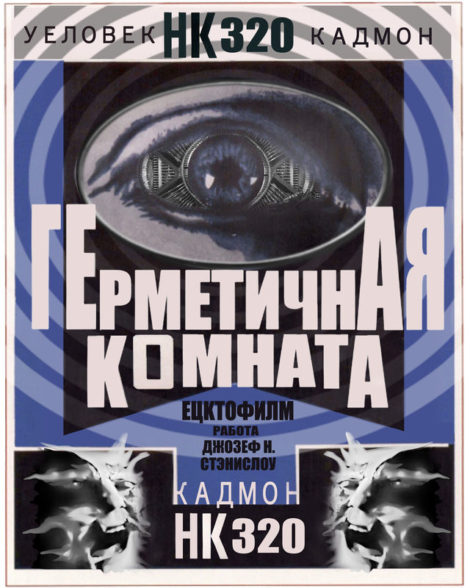
© Hermetica Komhata HK320 – All rights reserved. Via FHIFF.
The film Hermetica Komhata HK320 screened likewise for the first time in Italy at the FHIFF. Languages were Spanish and English with English subtitles.
The approximately 1 hour and 33 minutes lasting feature film »Hermetica Komhata HK320« by Director Ricardo Salvador is somewhere to be situated in between metaphysical retro-Sci-Fi, experimental and surreal. The black and white film was screened in English and Spanish language, with a bit of Enochian, made to sound Russian.
The film presents itself as a documentary, which tries to reconstruct a lost fictional Soviet film (destroyed by the authorities) by the likewise fictitious Dr.Joseph H.Stanislaw. The latter is said to have studied cosmic emanations with the help of Ektoplasma. Destroyed during the siege of Leningrad it was now finally possible to restore the original film and to release the phenomenal esoteric findings of the Soviet-era scientist.
The result is a combination of esoteric, spiritualism, philosophical speculation, science fiction and experiments on humans, relying heavily on symbolism derived from hermetic and cabalistic manuscripts. Though director Ric Salvador is not a believer in any esoteric current himself, he likes to borrow the symbols to express his own philosophical attempts. One would be the question, how to heal human defects in ways alternative to the classical political or religious approaches. For example, war is seen as a disease, being born from hate, which belongs to the pathologies of man. A condition for which neither religion nor law have found an antidote so far.
The term ectoplasm was coined by French Nobel Prize Winner in Medicine (1913) Charles Robert Richet. Beside his undisputed merits in the research of medicine, he received criticism for being a proponent of Eugenics and racist views.
His various interests spanned from poetry, over history and social sciences to philosophy. However, he spent a considerable amount of time on researching the paranormal.
In this context, he tried to explain the possibility of mediumship in 1894 by postulating a grey-whiteish, sometimes maybe light pink, foaming substance called ectoplasm. Ectoplasm was thought to be a real, material substance stemming from the medium itself and opposed to typical spiritistic ideas (ghosts), which would be involved in many spiritistic phenomena such as materializations. Usually very sensible to light it could be barely observed, except for darkened rooms.
Ectoplasm did not make it into science. So far all evidence was found to be not credible or fraudulent. However, ectoplasm made it into popular culture (Ghostbusters) and into spiritistic and even some occult literature around the beginning of the 20th century.
Important for Komhata HK320 is, that Dr. Joseph H. Stanislaw studied the »influence of cosmic emanations on the human mind, through his experiments with a film of Ectoplasmic sensitivity«.
I enjoyed the film a lot, which during the festival won the Mercure Award for the best picture, the Eco Award for the best research and the Jodorowsky Award for the best topic. Likewise, meeting with the crew of the film at the afterparty turned out to be worthwhile and enjoyable. A fun fact is that during the film, some sound samples supposed to be Russian actually contain Enochian, the angelic language known from 16th-century occultist John Dee. The team readily admitted that they found it just easier than learning the Russian grammar, which I can confirm comes not always in handy. From an occult point, a good choice anyways 😀
Agadah (2017)
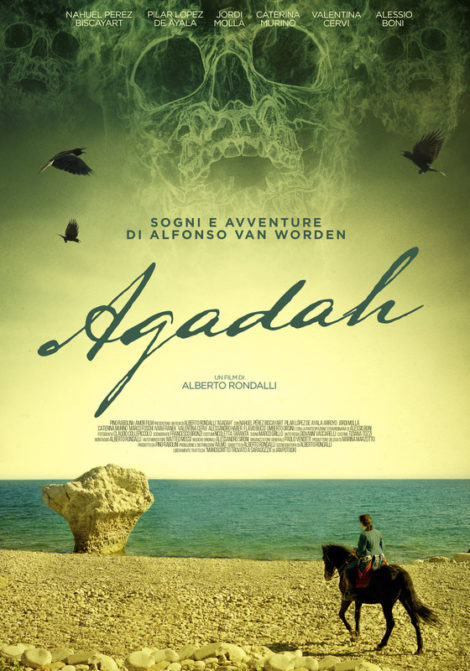
© Agadah – All rights reserved. Via FHIFF.
»Agadah« (2017) is an Italian adventure film of 126 minutes length in French, Italian, Spanish and was screened with English Subtitles. As I am not very into experimental movies or movies per se, this was probably the film I enjoyed the most.
The name itself is derived from the cabalistic term Aggadah, which means story, lore, legend, saying or collection. Often it refers to a collection of (rabbinic) texts, which are based on binding doctrines (the Torah or Talmud for example), but not binding doctrines themselves, and illustrate morals, advice, and teachings on all matters of life in historic or folkloric anecdotes.
The film, by director Alberto Rondalli, sometimes also named an 18th-century Decameron, is based loosely on the French novel »The Manuscript Found in Saragossa« by Polish writer Count Jan Potocki.
The movie starts showing Count Potocki writing his novel, while a young Bourbon officer decides to cross the haunted Murge plateau, or »Altopiano delle Murge« in Italian, to reach his regiment on the way to Naples.
The journey is divided in 10 days, which correlate to the ten sephiroth of the cabalistic tree of life (the book features 66 days) and mark a cycle of initiation into a secret society, probably masonry, as Potocki was a mason himself.
The 10 days – and especially nights – are full of unusual happenings and encounters, floating between the real world and the world of dreams, featuring erotic encounters with Mohammedan princesses, which turn out to be demons, meetings with cabalists or adventures in a gypsy camp.
The film ends with the death of the novelist, who committed suicide in the very same way as Count Jan Potocki killed himself in 1815. At the FHIFF »Agadah« won the Caduceus Award for the best feature film.
Friday – 2nd of March
The second day, featured some of the most interesting films for Nettle’s readers, as an entire block was reserved to Magick and Witchcraft – mostly »Left Hand Path« and »Modern Craft«. Moreover, »Hellsaga« should appeal to neo-pagans while »Holy Terrors« turned out to be a well-done feature film bringing Golden Dawn member Arthur Machen’s stories to life. »The Blacksmith« I liked personally a lot for the beautiful imagery of the Ukrainian countryside and the atmospheric blending with music. »TAU, the daemon and the city« was much awaited and director Gerard Gil joined us at the after party.
The Blacksmith (2017)
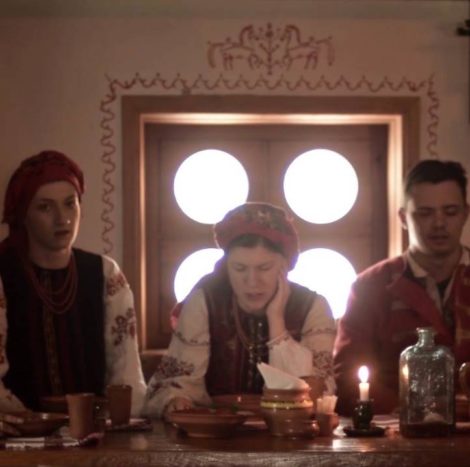
© The Blacksmith – All rights reserved. Via FHIFF.
The German 30-minute film »The Blacksmith« by directors Ivan Andrianov and Nina Gudme was filmed in Ukraine, had its Italian premiere at the FHIFF in Venice (World premier was at Cannes Film Festival) and screened in Ukrainian with English subtitles. Both directors are students at the Film University Babelsberg Konrad Wolf in Germany.
Located on the Ukrainian countryside around Kiev blacksmith Sergey explains his worldview to his student while teaching him the process of hammering and forging as they create a new piece of work on the anvil.
Not only their working style and the environment is rural but set in a stage which so far has suffered little exposure to modern lifestyle. Also, the mentality is in many regards still untouched by modern life. One of the most obvious scenes in this regard is the Blacksmith’s comments about his feeling of time and the right timing. The entire surroundings, starting with the landscape and ending with the people and their lifestyle merge perfectly well with what for the most western ears is archaic sound, but which in many parts of Eastern Europe still is traditional popular music.
The directors intent was to show the »closed, rich and worldwide unknown culture of Ukraine … revealing its essence of strength and resistance«. I enjoyed the music and the rural images a lot, it reminded me often of Transylvania before joining the EU. This makes some sense, both Romania and Ukraine share a part of the Carpathians.
The film won the Atalanta Award for the best music at the FHIFF.
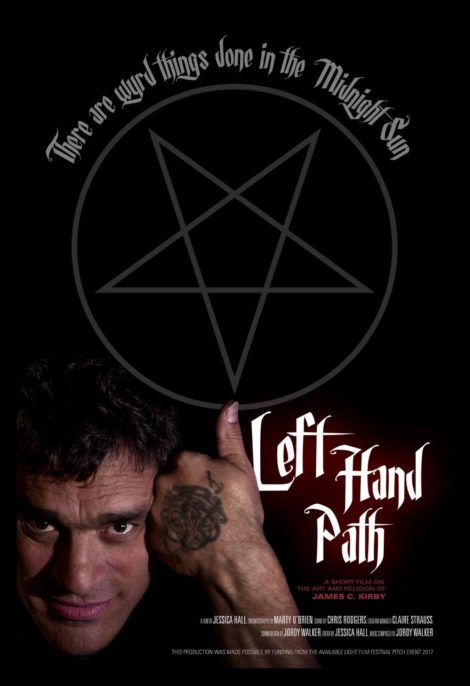
© Left Hand Path – All rights reserved. Via FHIFF
Left Hand Path (2017),
One of my favorites during this FHIFF edition was »Left Hand Path« by Jessica Hall. A documentary featuring the Setian religion of James Carman Kirby. James was an artist from Whitehorse, Yukon, Canada and Magister Templi in the Temple of Set until his death, in late autumn 2017. As far as Nic Nassuet told me, James died on Halloween, after a long illness, and as it seems on his own terms. So basically he died the same way as he had lived his life.
Kirby was a creator of fine jewelry in gold and silver, as well as other rare and precious materials such as gemstones, or ivory. However, he did not work with any animal material with the exception of fossilized Woolly Mammoth Ivory and dinosaur bone. In the film, while working on one of his unique pieces of jewelry James C. Kirby explains the philosophy behind »black magick« as understood by him and probably many members of the Temple of Set. The documentary also shows him in his ceremonial magick altar space, which he explains with the words:
»… So when we do ritual, we act as gods. That’s the purpose of ritual, to make conscious changes to your life, in a very direct fashion. You’re speaking to yourself through yourself, to your highest self. This is my altar and every Setian’s altar will be different. You don’t need an altar, you don’t have to have one. I come from a ritual magic background from Thelema. So I like the ritual aspects of having an altar…«
This was the international premiere of the 14-minute short film and documentary from Canada, filmed in Canada, directed by Jessica Hall. The movie is in English language and has English subtitles, which come in quite welcome in certain passages, such as in the part where a lot of specialty lingo in Greek or Egyptian is used. »Left Hand Path« won the Pelican Award for the best (short) documentary at the FHIFF.
Modern Craft (2016)
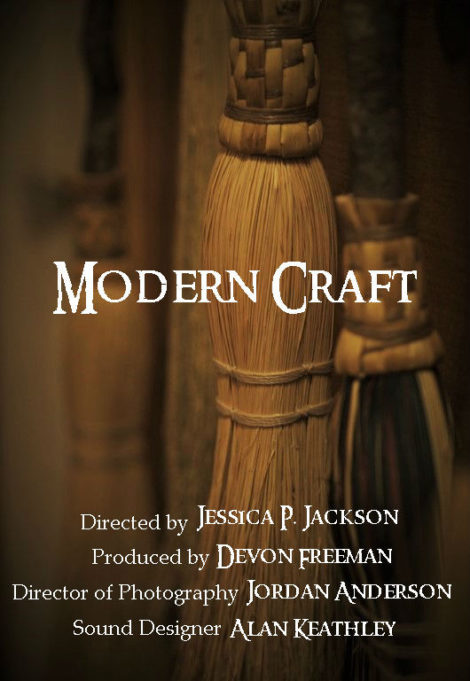
© Modern Craft – All rights reserved. Via FHIFF.
»Modern Craft« is a short documentary with nice, witchy imagery and atmosphere, which contrary to the suggestive film poster and a large part of the scenery does not want to further spread prejudices about witchcraft. Rather, it is director’s Jessica P. Jackson’s aim to decompose stereotypes and to demystify Wicca by showing what it really is: a peaceful and non-offensive religion. Honestly, I have no idea whether she succeeds or not, having been an occultist nearly all my life since childhood. I do not see the problem which some outsiders may have with Wicca in the first place.
Anyways, during the roughly 11-minute lasting short-film, the spectator comes in touch with Wicca through a Wiccan High-priestess, a young newcomer Wiccan and a Christian, who is studying this neo-pagan religion. The High Priestess, Lady Passion, is a third-degree Gardnerian Elder in the Californian Line and High Priestess of Coven Oldenwilde in Asheville, NC.
By real name Dixie Deerman and of Northern Irish ancestry, Lady Passion has been a »public witch« since 1976, counsels clients since 1979, focuses on herbal medicines, divinations, but is also a registered nurse since the late 1980ies. She wrote a total of four books so far: Candle Magic; Simply Savory: Magical & Medieval Recipes; Ask-A-Priestess: Wise Answers From a Real Witch; and last but not least: Pagan Prisoner Advocate’s Guide.
The Film from the United States was screened in English, filmed in the US and had its premiere in Italy on the FHIFF.
Jenny loves Satan (2017)
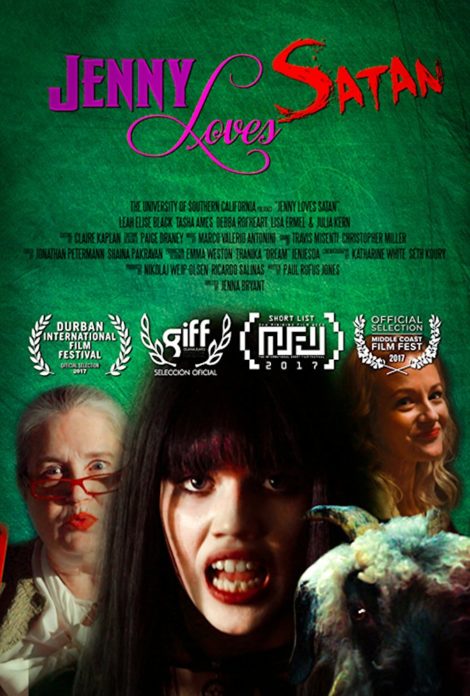
© JENNY LOVES SATAN – All rights reserved. Via FHIFF.
»Jenny Loves Satan« is a short film of 14 minutes and 21 seconds. The movie was produced by the University of Southern California and realized by students: Jenna Bryant as Director, Paul Jones as writer; Nikolaj Wejp-Olsen and Ricardo Salinas as producers.
The 12-year old teenager Jenny, played by Leah Black, decides to become Satanist within an act of well-through-thought rebellion:
»I know that you are just simply a representation of man’s carnal nature and a symbolic rejection of false deities« sounds Jenny’s satanic prayer in her penumbrous children-room, set against the background of a wall with pink wallpapers. »I didn’t think you were real…« she adds.
But soon she will find out, that her »symbolical rejection of false deities« quickly exposes and overburdens the quite limited capacities of many in the world around her. Not only other kids at school, who much her, but »rational« adults, such as parents and a teacher at the school, which lets her know, that religious liberty is for everyone, except for Satanists.
During the movie, Satan hears Jenny’s call and appears – played by Julia Kern – to offer help. I laughed and enjoyed the movie so much. Maybe because it compensated me post-hoc for all the experiences with irrational teachers, and other themselves well-educated deeming persons in society I had to deal with when I was the same age as Jenny. I am not sure if this was what the filmmakers were thinking about while filming »Jenny Loves Satan«, but it is my take on the film, which won the Audience Award on the FHIFF 2018.
Holy Terrors (2017)
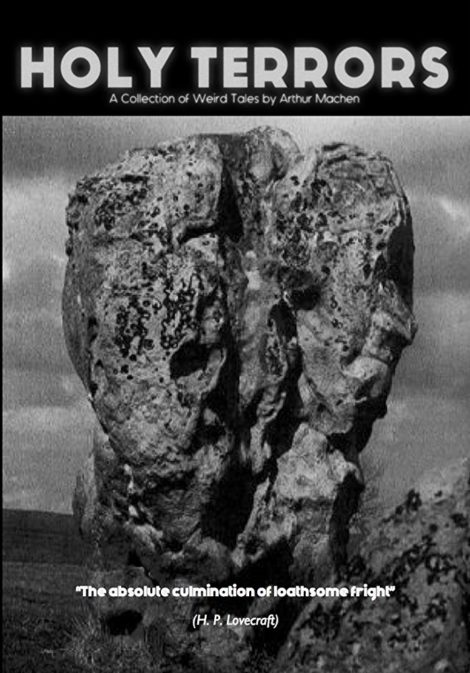
© Holy Terrors – All rights reserved. Via FHIFF.
»Holy Terrors« or »Six Weird Tales by Arthur Machen« is a digital feature film from the United Kingdom, for the first time shown in Italy and directed by Mark Goodall and Julian Butler. Best described with the genres Horror, Supernatural and Ghost stories the about 1 hour and 14 minutes lasting film is mostly black and white but has also some scenes in color.
A detailed review with an extensive background is available here at folkhorrorrevival.com, but let’s give a short overview and some words about Arthur (Jones) Machen’s relation to the occult and the hermetic sciences: Born 1863 in Wales as Arthur Llewellyn Jones, the later »Machen« became a popular writer of fantastic and horror stories, who influenced among others H.P Lovecraft. However, he was also a member of The Hermetic Order of the Golden Dawn but seemed to prefer the safe haven of the Anglican church in the long-run.
Nevertheless, he had been a close friend with A.E. Waite and the interest in the occult and supernatural have been a constant in both his life and work. The literary breakthrough in 1894 came with the horror novel »The Great God Pan« on the coexistence of the real world and a mythological Celtic-roman parallel-world. Even though Machen is said to have been a down-to-earth person, who would not just readily believe in the supernatural, mythology and the fantastic always remained a constant in his writings.
The film captures the elegiac style of his stories, was well received by fans and won the Special Mention Award at the FHIFF 2018.
Hellsaga (2017)
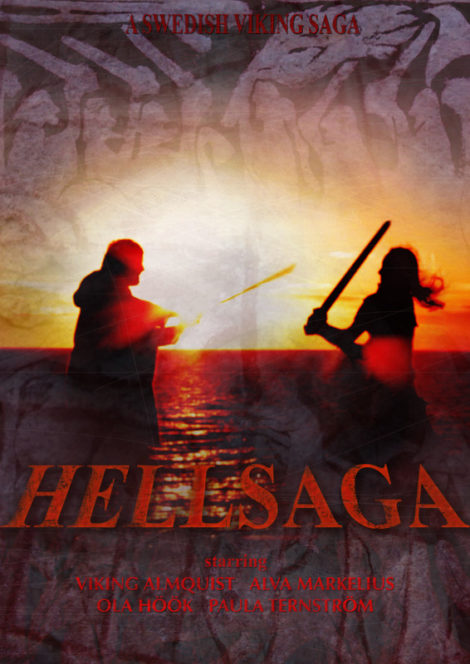
© Hellsaga – All rights reserved. Via FHIFF.
»Hellsaga« or »A Swedish Viking Saga« is a 12-minute color-short film by director Viking Almquist from Sweden, and was screened in Swedish with English subtitles on the FHIFF.
For the first time shown in Italy, we could see the story of »a young warrior [who] seeks the wisdom of the gods« in this historical adventure film from 2017.
The film claims to be “based on the Poetic Edda, a tale of magic and myth”. What we see is a Wanderer without a name (played by Viking Almquist himself), clashing with a »black viking«, seeking advice from his mother, meeting a troll in the woods, talking to the dead at the beach before meeting again with the Black Viking for the final battle…
We see some runes and the encounter with the troll in the woods seems very much inspired the classic battles of knowledge in riddle form between Odin and the giants. In particular, it reminded me of the encounter between Odin and Vafthruthnir in the Vafthruthnirmol.
Also in other regards, the film incorporated historical references to archeological Viking findings, such as the helmet of the Black Viking and the horns of troll.
TAU, the Daemon and the City

© Tau, the daemon and the city – All rights reserved. Via FHIFF.
»TAU, the Daemon and the City« was the last film shown on the 2018 edition of the FHIFF and won 3 awards: The Fludd Award for the best cinematography, the Cagliostro Award for the best storytelling and the Jury Award. It was screened in Catalan with English subtitles and had its international premiere on the FHIFF.
»Tau is, at once, a fiction film on spirits, a documentary on the passing of time in a small town and a portrait of Catalan traditional culture«. The spectator witnesses a fictional portrait of the Catalan city Taragonna, shown through the eyes of a daemon, living in a parallel world, which is both transcending and surrounding our human world.
The slightly over 2 hours lasting film (123 minutes) is comprised of old footage director Gerard Gil collected during the last years, during a time, while he was also working as a cameraman for TV in his hometown.
Or as Gerard Gil declares for NettlesGarden.com:
»I often found myself in a situation where I had to film some images for a program and, meanwhile, I noticed the really interesting images where happening aside. But I couldn’t film them at that moment, since I was working for tv. The film came afterwards, going to the streets on my own, with no preconceptions on what to film, and being completely free with the camera.
It actually took several years of going out to the street in this way to get the footage for the film.«
The story, or voice over, was directly dictated to him by the daemon itself after Gerard had read Plotin’s Enneads. »It’s hard to say whether we have ideas or ideas have us« asks the director of TAU, commenting his work and the process of its creation.
A good question, to end a film festival around the Hermetic tradition, which owns so much to the works of the Platonists.
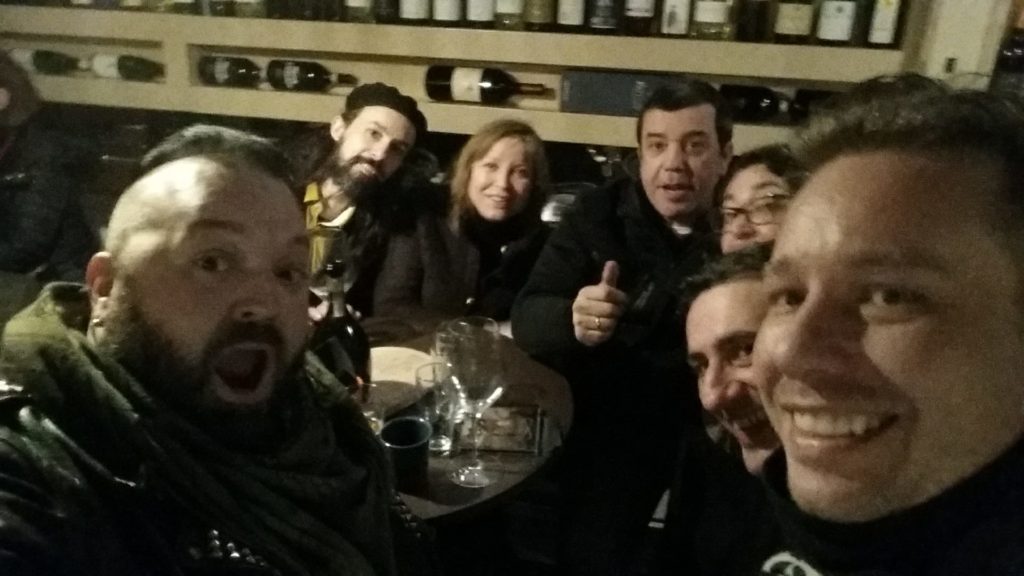
Nic Nassuet (CHRYSALIS), Gil Gerard (TAU), the team from Hermetica Komhata HK320: and Judith Queralt, Daniel Sanz (Producer Hermetica komhata) Maya and Mark Baker (co-Writer Hk) and me, Alexander, host at Nettle’s Garden – The Old Craft, at the afterparty of the FHIFF 2018 in the bars of Venice (left to right). Photo by Nic Nassuet.
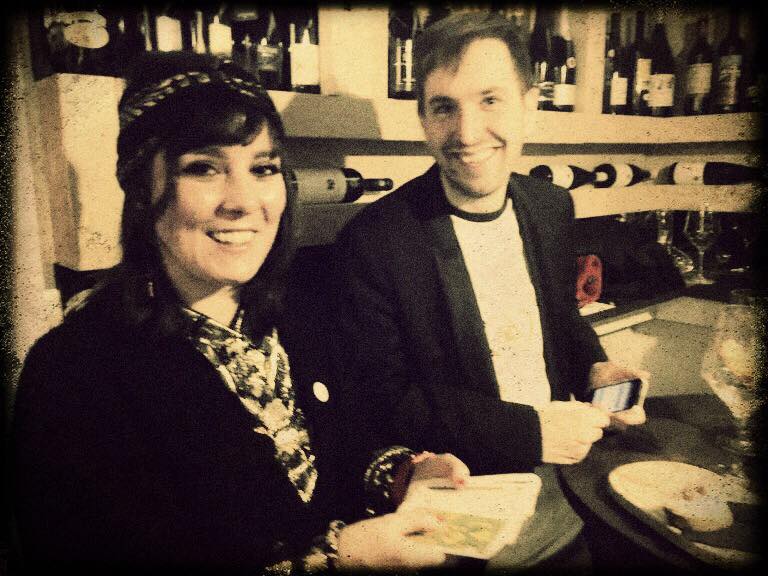
Festival Director Sara Wundersaar Ferro and Technical Director Chris Weil at the afterparty of the FHIFF 2018, celebrating the success of the festival and Chris 30th birthday. Nettle and The Old Craft congratulate 😀

www.Nettlesgarden.com – The Old Craft


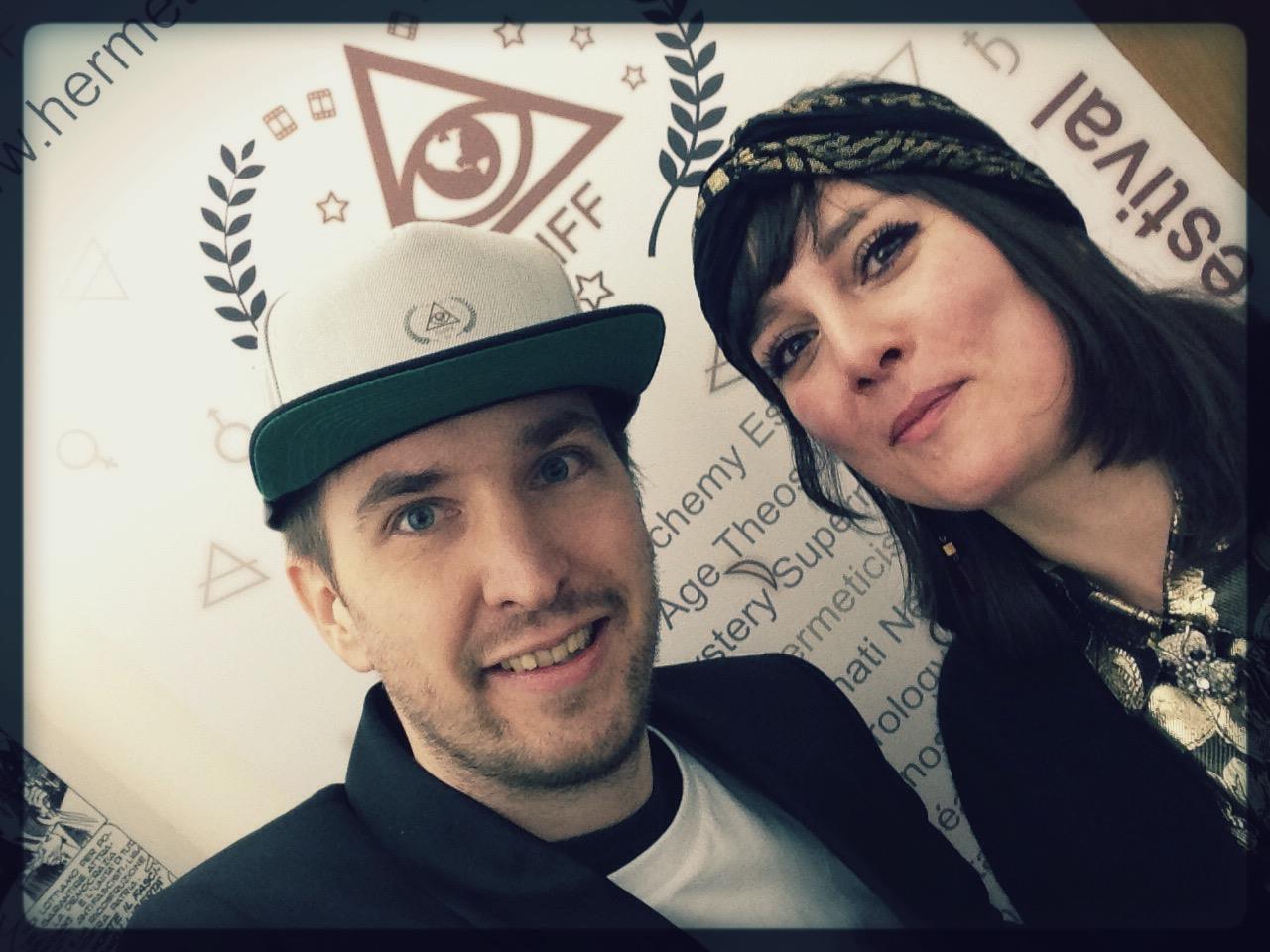
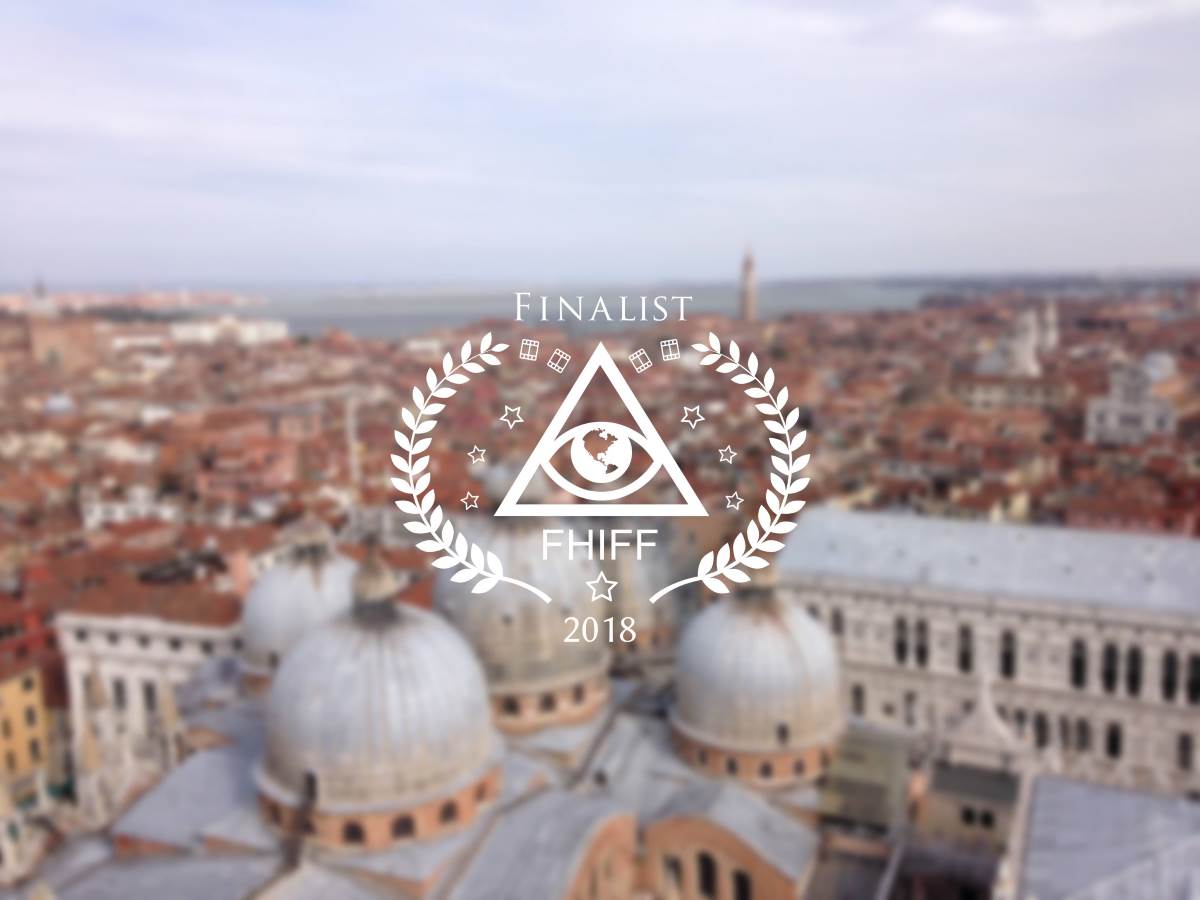
Mark A. O'Blazney | March 13, 2018
|
Zounds !
Setken | March 25, 2018
|
Hey I really enjoyed reading your review and wish I had been there to see those movies!
Thanks!